As we and many suspected, the Fed and Jerome Powell are not backing off their hawkish tone. Hawkish monetary policy will continue this year and likely through next year. The Fed raised the Fed Funds rate by .75bps to 3.00%-3.25%. The last time they raised by 75bps or more in three consecutive meetings was 1980. The Fed expects Fed Funds to end the year at 4.40%. Hawkishness continues next year, with a slight rate increase expected in 2023. Since Powell’s Jackson Hole speech, market expectations have aligned with the Fed’s hawkish plans. The graph below shows how Fed Funds futures changed following yesterday’s policy statement and its revised forward projections. Fed Funds futures imply year-end 2023 rates at 4.30%
The table below shares the Fed’s median projections and their respective changes from June. Its GDP projection for 2022 fell from 1.7% to 0.2%. 2023 GDP is also revised lower to 1.2%, while PCE (inflation) projections rose by +0.2% in 2022 and 2023.
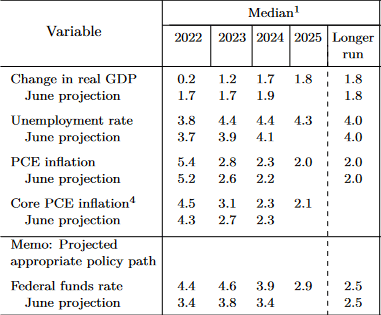
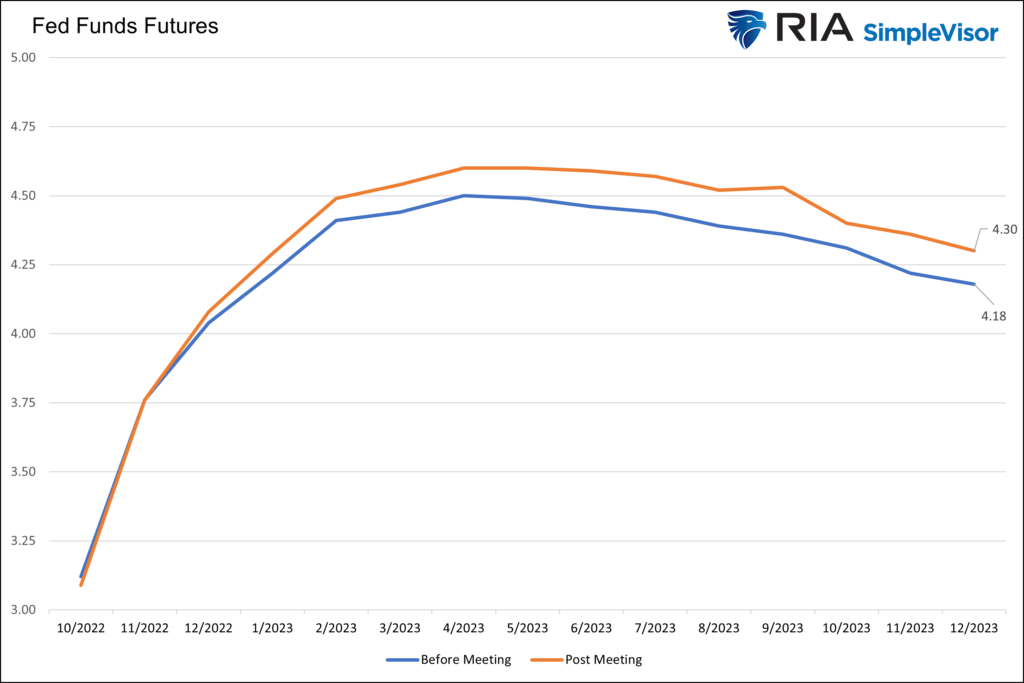

What To Watch Today
Economy
- 8:30 a.m. ET: Current Account Balance, Q2 (-$260.8 billion expected, -$291.4 billion prior)
- 8:30 a.m. ET: Initial jobless claims, week ended September 17 (218,000 expected, 213,000 prior)
- 8:30 a.m. ET: Continuing claims, week ended September 10 (1.400 expected, 1.403 prior)
- 10:00 a.m. ET: Leading Index, August (-0.1% expected, -0.14% prior)
- 11:00 a.m. ET: Kansas City Fed. Manufacturing Activity, September (5 expected, 3 prior)
Earnings
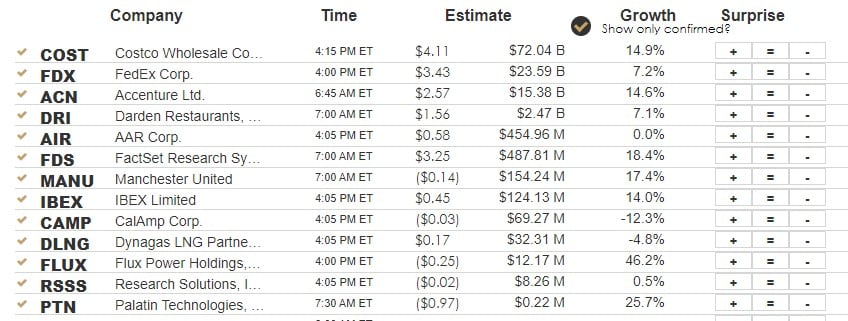
Market Trading Update
As noted above, the Fed announced its widely expected 75bps increase in the Fed funds rate yesterday. What wasn’t as expected was the Fed more “hawkish” stance suggesting it will maintain higher rates “for longer” than many market participants expected. Stocks fell, rallied, and fell again as investors parsed every word of Powell’s statements to determine what may come next.
The market spent most of the day trading above the May support level but fell below that to close out yesterday’s trading. With the market oversold, it would not surprise us to see a bit of a relief rally today or tomorrow. However, as we reiterated as of late, investors should use rallies to rebalance risk accordingly. The Fed’s more aggressive stance suggests we could see lower markets soon as investors reprice both economic and earnings risks from tighter monetary conditions.
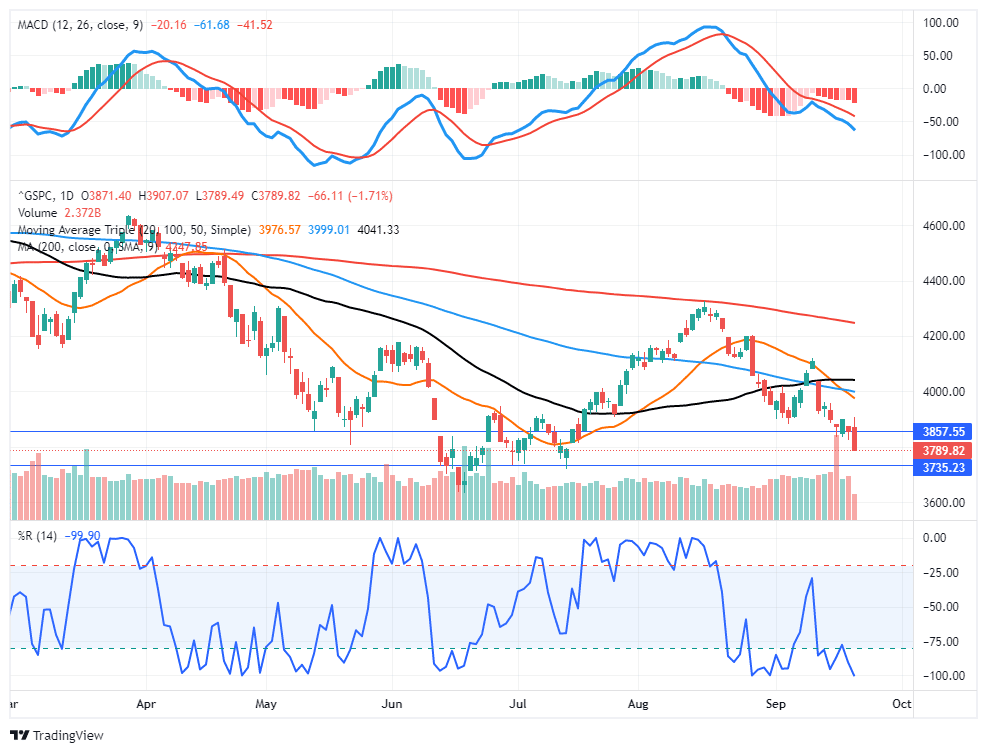
Government Has To Get Spending Under Control
A paper published by the Kansas City Federal Reserve Bank acknowledged that the central bank can’t slay inflation unless the US government controls its spending. In a nutshell, the authors argue that the Fed can’t control inflation alone. US government fiscal policy contributes to inflationary pressure and makes it impossible for the Fed to do its job.
Trend inflation is fully controlled by the monetary authority only when public debt can be successfully stabilized by credible future fiscal plans. When the fiscal authority is not perceived as fully responsible for covering the existing fiscal imbalances, the private sector expects that inflation will rise to ensure sustainability of national debt. As a result, a large fiscal imbalance combined with a weakening fiscal credibility may lead trend inflation to drift away from the long-run target chosen by the monetary authority.”
This isn’t in the cards.
“As interest rates rise and the nation’s debt grows, it will become even more expensive to borrow in the future. Congresses and presidents of both parties, over many years, have avoided making hard choices about our budget and failed to put it on a sustainable path. It is vital for lawmakers to take action on the growing debt to ensure a stable economic future,” the Peter Peterson Foundation said.
Understanding Warren Buffett’s Moats
Warren Buffett uses the term “economic moat” to describe a company’s ability to maintain a competitive advantage. A moat allows a company to better protect its market share and, ultimately, longer-term profits. At a 1995 shareholder meeting, Buffett explained key traits a moat must have.
“What we’re trying to find is a business that, for one reason or another — it can be because it’s the low-cost producer in some area, it can be because it has a natural franchise because of surface capabilities, it could be because of its position in the consumers’ mind, it can be because of a technological advantage, or any kind of reason at all, that it has this moat around it.”
The illustration below provides examples of moats broken down into five key sources of profits.
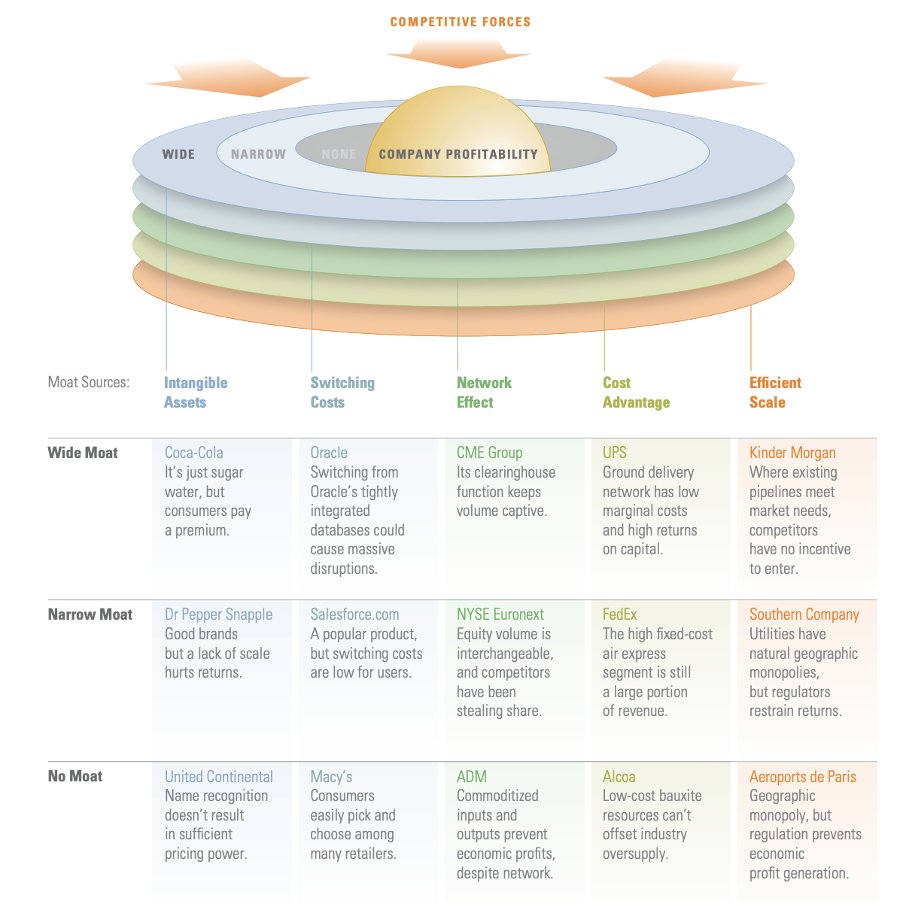
Housing Supply Coming
The graph below potentially paints an ominous picture of new home prices soon. For the first time in over 50 years, there are more homes under construction than those recently completed. If mortgage rates remain high, new homes coming to the market in the coming months could create quite a housing glut, resulting in lower prices. This fact is not lost on homebuilders. According to the NAHB survey, the collective sentiment of homebuilders is at 8-year lows.
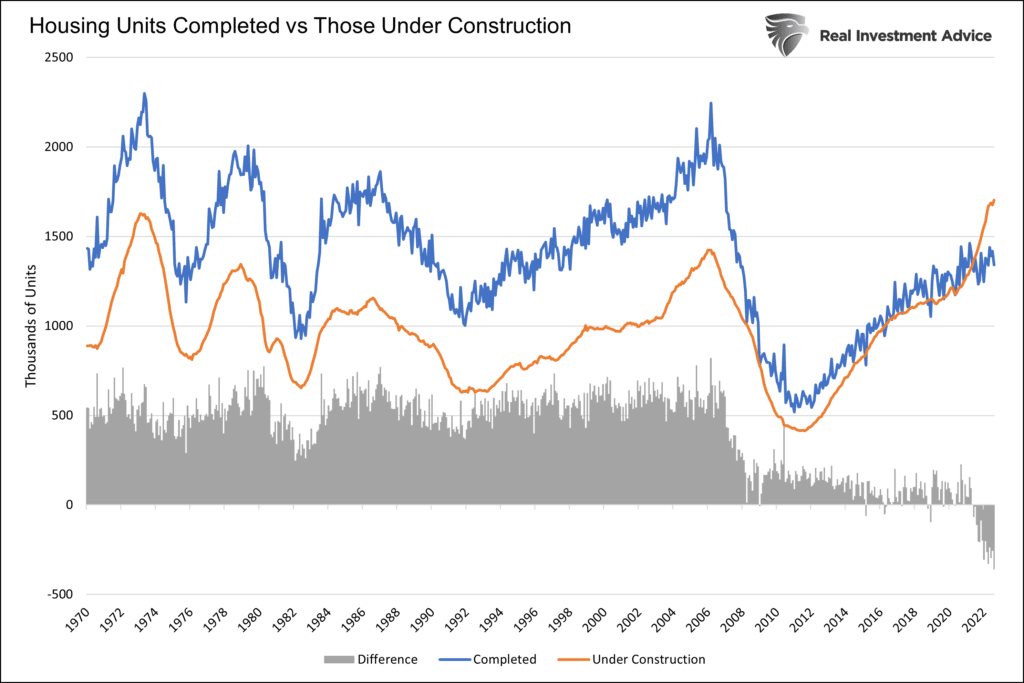
America’s Gerontocracy
Interesting note from Chartr discussing the “Congressional Gerontracy” in the U.S.
“Data compiled by Insider, and visualized above, shows how dramatically Congress has aged in recent years. A stunning 23% of Congress’ members are now over 70 years old, compared to twenty years ago when just 8% of legislators were 70+. If they keep their seats in November, two members would even turn 90 whilst serving in Congress next year.
With midterms just around the corner (8th of November) and POTUS’s 80th birthday not far behind, discourse around America’s aging congresspeople is getting louder — with a CBS poll showing remarkable bipartisan support for age limits of elected officials.”
While there is a louder rumbling of voices for changes to the law to fix the issue, there is one absolute certainty. Time will solve the problem.
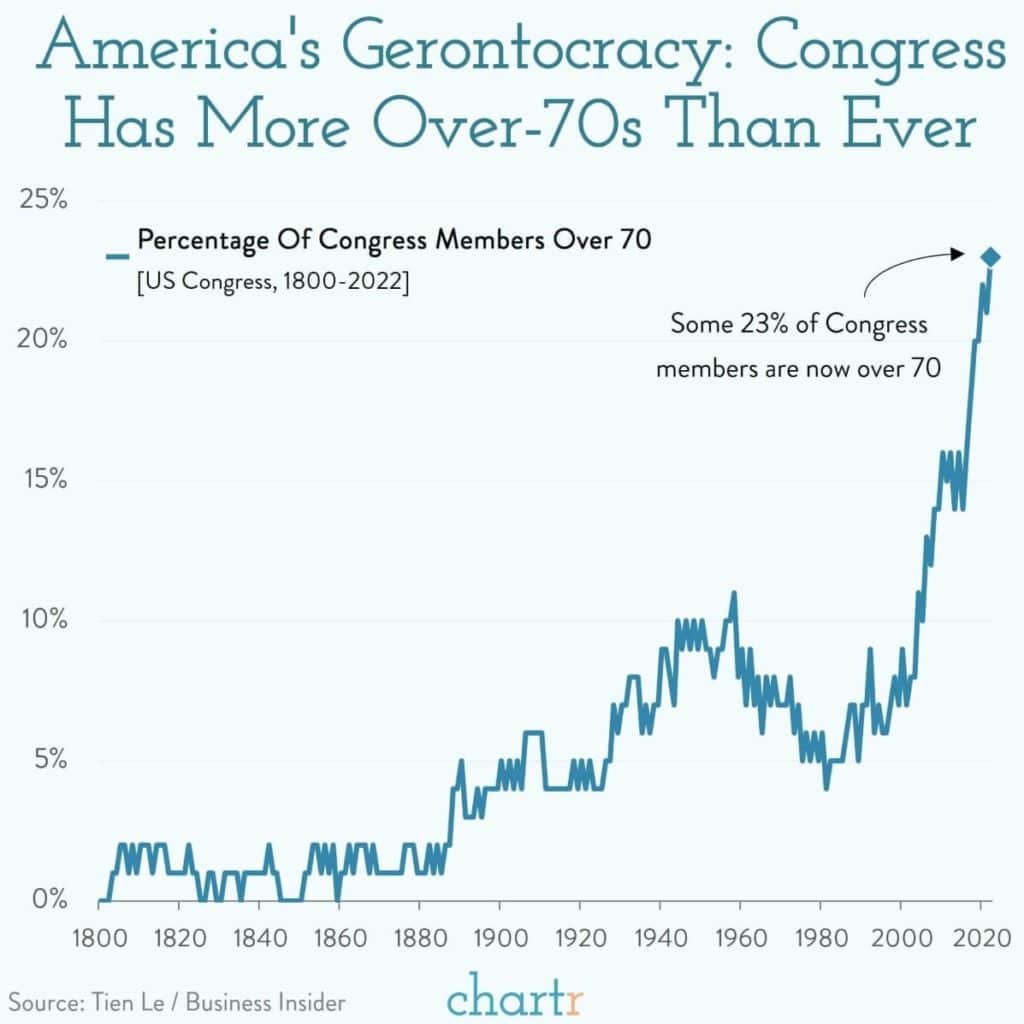
Stock Expectations Are Not Bottom-Like
Markets often bottom when almost everyone thinks they are going lower. As the chart from The Daily Shot below shows, investors are largely bullish on their one-year expectations. If we are indeed in a bear market, this one chart signals we may not have seen the bottom. Ideally, we want to see the bell curve below shift lift to call a bottom using sentiment. Therefore, it’s worth sharing some sage advice: markets usually do what is most painful to the largest number of investors.
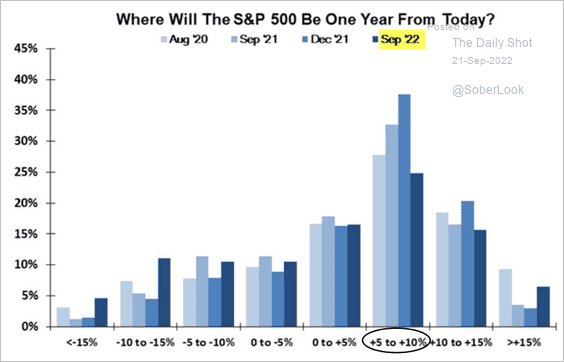
Tweet of the Day
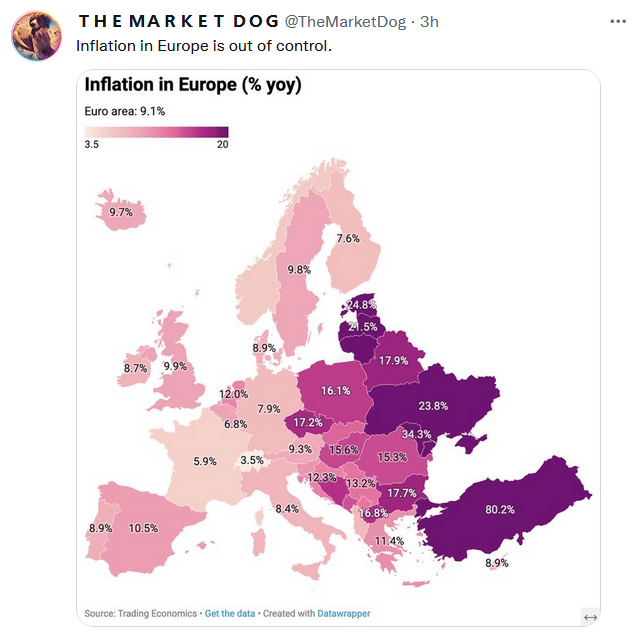
Please subscribe to the daily commentary to receive these updates every morning before the opening bell.
If you found this blog useful, please send it to someone else, share it on social media, or contact us to set up a meeting.
Also Read

















